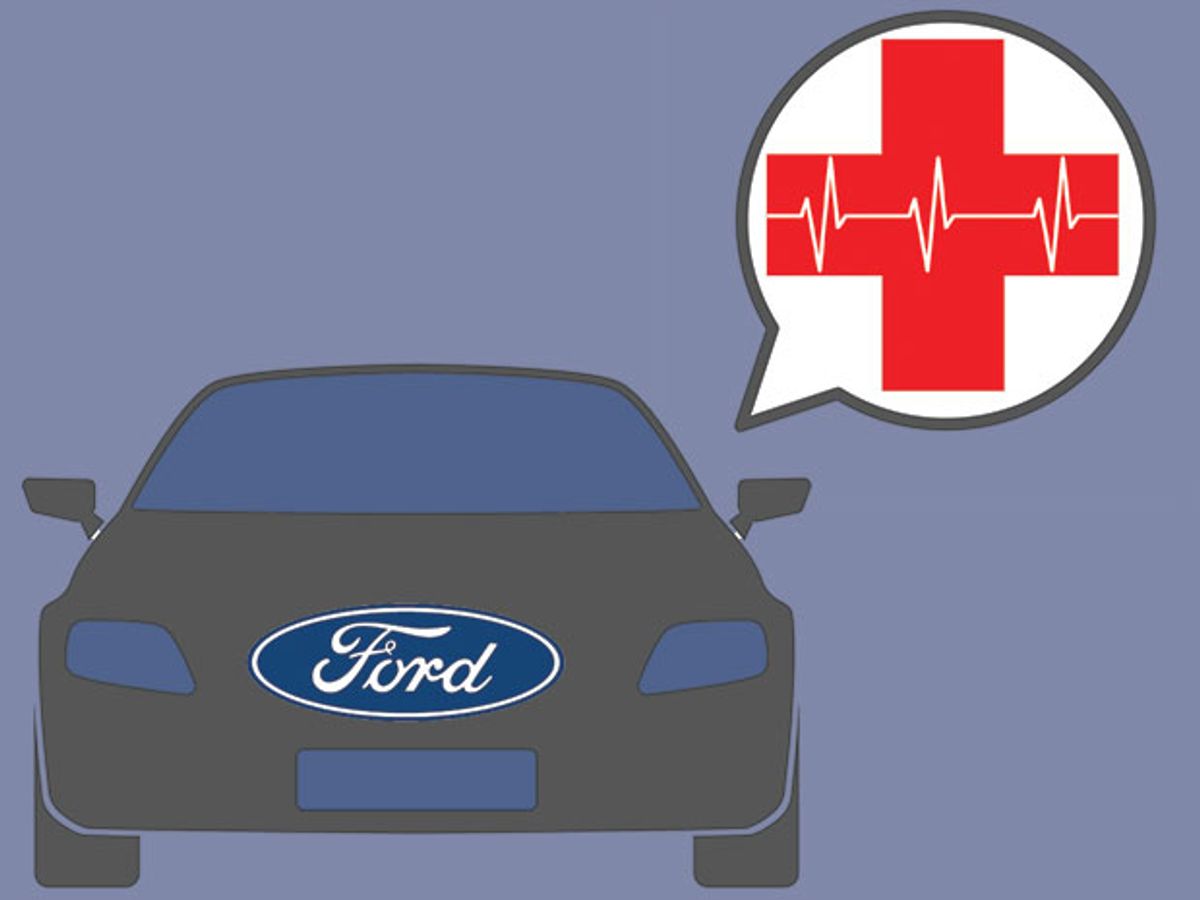People can form intimate connections to their cars in the course of daily commutes, frustrating traffic jams, and liberating road trips. How would you feel, though, if your car knew detailed information about your insides, such as the regularity of your heartbeat and the amount of glucose in your blood?
Ford is experimenting with all sorts of health and wellness features for its cars and SUVs, according to Pim van der Jagt, a Ford R&D leader who described some of the company’s experiments last week in a keynote talk at the IEEE Body Sensor Networks Conference.
“We’ve seen consumer spending on health and wellness going up strongly,” he later told IEEE Spectrum in an interview. That trend motivated Ford to work on health features for its cars that it hopes will excite customers and give it an edge in the competitive automotive market.
As executive technical leader of R&D for vehicle technologies at the Ford Research and Innovation Center in Aachen, Germany, van der Jagt oversees experiments in three different types of health features for cars, which he calls the three Bs: built-in, brought-in, and beamed-in services. He gave Spectrum an example of each.
A heart monitor in the driver’s seat: In the built-in category, Ford has developed an electrocardiography (ECG) reader that’s integrated into the driver’s seat. While the ECG systems used in hospitals use electrodes attached to the skin, this contactless system records its signals through the driver’s clothes. Although they should be “normal” clothes, van der Jagt added, “not a thick winter jacket or leather coat.”
With every heartbeat, an electrical signal ripples through the heart’s muscle cells. Ford’s car seat incorporates six capacitive plates to record that signal by registering the electric charge between the plates and the driver’s body, which changes slightly with every heartbeat. This technology was developed in collaboration with Steffen Leonhardt, a professor at RWTH Aachen University.
Van der Jagt imagines people with heart conditions using their daily commutes as convenient checkups. He notes that heart patients can already use wearable heart monitors and apps for at-home checkups, taking the readings themselves and sending the data to their doctor or a health coach. “Instead of taking 10 minutes to do this at your kitchen table,” he says, “why not do it seamlessly while driving? Then when you get to your office the analysis is waiting in your inbox.”
While the Ford engineers have proven that the technology is feasible, van der Jagt says they’re now trying to determine if there’s a market for such a feature. One data point that argues for it: Ford has estimated that one-third of its European customers will be 65 or older by 2050, and older people quite often have heart problems. What’s more, people are staying behind the wheel until increasingly older ages. “We’re considering that people over 100 will drive cars,” van der Jagt says.
Glucose-monitor data in the car’s dashboard display: This potential feature would be brought in via wearables and apps that are connected to the car via Ford Sync, which puts info on the car’s central display screen.
Diabetics have to keep a close eye on the glucose level in their blood, which fluctuate with meals and other daily activities. Low glucose can cause an immediate crisis, and the diabetic person can pass out. So diabetics are increasingly using continuous glucose monitoring systems, which typically have sensors under the skin that send data to a base station or smartphone.
Such monitoring systems could just as easily send data to the car. “Rather than picking up your phone to check the numbers that your wearable device generates, you just see it on the screen,” says van der Jagt. “It would be much safer.” In addition to drivers checking their own levels, he also imagines a mom with a diabetic toddler in the back seat who seems to be asleep—or could be unconscious due to a glucose crash. “On the screen she can get the reading,” van der Jagt says. “The child is perfectly fine, and then she can concentrate on the road again.”
A full check up while driving: Beamed-in health features are farthest out in the future, van der Jagt says, but they’ll be possible in next-gen cars that are directly connected to the Internet.
That connectivity would make in-car telemedicine a possibility, says van der Jagt: “Instead of visiting your family doctor, if you have a spare hour in the vehicle you can connect with him.” Sensors in the car could remotely record the driver’s vital signs and send that data to the doctor during the consultation.
Ford is already equipping test cars with all manner of cameras and sensors to remotely measure vital signs. Body temperature can easily be measured with infrared cameras or in-seat sensors. For respiration and heart rate, Van der Jagt notes that low-intensity radar can be used; in these systems, electromagnetic waves directed at the body bounce back from different types of tissues in different ways. As the person’s heart beats and their lungs expand and contract, the radar signal changes.
Van der Jagt also mentions that he recently met with the Dutch technology company Philips about the company’s vital signs camera. It measures heart rate by detecting the incredibly subtle change in skin color as blood rushes through the arteries and capillaries of the face, and measures breathing rate by recording the movements of the person’s chest. “We’re talking with suppliers to see if there’s interest in working together,” he says.
While all the features that van der Jagt described to Spectrum are still speculative, it’s not too early to consider the proper tunes to play while your car gives you a thorough going-over. The Police’s "Every Breath You Take" can top the playlist.
Eliza Strickland is a senior editor at IEEE Spectrum, where she covers AI, biomedical engineering, and other topics. She holds a master’s degree in journalism from Columbia University.






